- Home / Catalog / Professional Skincare / Chemical Peels
Chemical Peels for Professionals
Nothing found
CHEMICAL PEELS FOR PROFESSIONALS
Professional Chemical Peels
There are multiple types of skin concerns experienced across the globe today. While some are similar in category, everyone’s situation is different because not all skin types react the same way to certain treatments.
The intensity of each condition also varies, which means that some people may find relief with mild treatments that can be safely self-administered in the comforts of home. Still others have more stubborn cases that require the attention of a dermatologist who may prescribe stronger medication - such as professional chemical peels.
What Are Chemical Peels?
A chemical peel is a form of cosmetic treatment that utilizes different kinds of acids and is manufactured to lessen the occurrence of acne, while also smoothening the skin, fading out scars, reducing wrinkles, and removing any damaged skin cells caused by too much sun exposure.
What Benefits Can Your Clients Get From Chemical Peels?
Chemical peels are effective exfoliants that safely peel off damaged skin cells, which can offer multiple benefits given that the client’s skin reacts favorably. These benefits include, but are not restricted to:
- Reduces appearance of blemishes
- Lessens occurrence of acne
- Fades out acne scars and other kinds of skin trauma
- Smoothens the texture of the skin
- Helps skin glow
- Reduces wrinkles and other fine lines
- Removes the surface of sun damage
- Fades signs of hyperpigmentation, including melasma
- Evens out skin tone and reduces redness
- Boosts their level of confidence
- Increases possibility of a happier disposition, which enhances relationships, productivity, and overall mental health
Types Of Chemical Peels
There are three different kinds of chemical peels available today and are categorized by how deep they can infiltrate the skin. They mostly differ in the types of acid used, and can range from superficial, medium, or deep.
Type #1: Superficial Peels
Superficial chemical peels are the most delicate kind since they only utilize mild acids such as alpha-hydroxy acids (AHA). These are water-based acids and are manufactured to only penetrate the uppermost layer of the skin.
Type #2: Medium Peels
Medium-depth chemical peels are suggested for clients with a moderate amount of skin damage. These can include age spots, minor acne scars, blemishes, wrinkles, and minor hyperpigmentation. It is expected to cause some swelling within the first 48 hours but it should subside shortly after.
Type 3: Deep Peels
Deep chemical peels are the most aggressive types as they can penetrate all the way to the reticular skin layer. They are not as commonly administered since most clients prefer to use alternative treatments.
How Do Chemical Peels Work?
The acids present in chemical peels gently exfoliate the skin. The depth of the cells they remove depends on the intensity of the acid used as they could be debris from the outermost later or dead cells lodged deeper.
Once applied to the affected zones, the peel dissolves the elements binding the cells to the skin and takes off a controlled amount across the area. This promotes even skin tone and only minimal scarring when it completely heals.
Because it strips off the exposed layer, your skin will be left with a newer, fresher exterior that is much smoother, more vibrant, and have little to no blemishes, wrinkles, scars, or fine lines.
CHEMICAL PEELS TREATMENT
When acquiring a chemical peel treatment, both the client and licensed skin care professional must understand what exactly the treatment can be used for, who the ideal clients are, what results to expect, how often sessions are administered, and other types of information. Below, we discuss all the details necessary before getting a chemical peel treatment.
What Is A Chemical Peel Treatment?
It is a highly effective cosmetic treatment that is designed to diminish blemishes, scars, acne, hyperpigmentation and other concerns that can be alleviated through exfoliation.
For the treatment to be safe and effective, a pre-determined amount of the chemical peel solution is applied to the problem areas and left for a specific amount of time. The factors that go into the amount applied and time left to sit depends on the type of peel used, how concentrated the solution is, the client’s skin type, and how the skin initially reacts to the medication.
While it sits on the area, the acids in the peel start to dissipate the link binding the damaged skin cells. This reveals the healthier layer of skin underneath.
Who Needs A Chemical Peel Treatment?
Those experiencing mild to moderate cases of fine lines, acne scars, sun damage, or hyperpigmentation can benefit from a chemical peel.
While it is generally safe for all skin types, those with very sensitive skin or are currently experiencing a barrier dysfunction (such as eczema, psoriasis, and the like) are not advised to take on a chemical peel treatment.
Similarly, those with skin types that are likely to burn easily should also proceed with caution as this reaction may end up triggering pigmentation.
Do Chemical Peels Really Work?
While results are dependent on many factors, chemical peels have proven to work time and time again for differing clients. The condition being treated, the skin type concerned, and the type of peel administered all play a role in just how effective the treatment can be.
Chemical Peels Results
Superficial peels are expected to smoothen out the skin’s texture and mildly fade out fine lines, wrinkles, scars, and discoloration. While the initial results may be subtle, they will be more obvious with more treatments.
Medium peels will have a stronger effect and can aid in alleviating harsher conditions. The results will be more prominent compared to superficial peels.
Deep peels are used to treat severely damage areas and is expected to make a significant difference in skin condition.
How Often Should A Client Get Chemical Peel Treatments?
The frequency of treatments will vary on the type of peel administered and the severity of the condition. Superficial peels are perfectly safe to incorporate in a monthly skin care routine and can be administered every 2-5 weeks, depending on the advise of the attending dermatologist.
Medium peels are usually spaced out into 3-6 sessions, and can be repeated every 6–12 months, if necessary.
Deep peels can be repeated every 3 years, and only if deemed necessary by the healthcare professional.
What Are The Side Effects Of Chemical Peels and Do They Hurt?
While not all skin reacts the same way, there is a general expectancy of side effects resulting from each type of peel, namely:
Superficial peels have a very low risk of causing side effects. However, they may result in mild redness much like light sunburn.
Medium peels are a little harsher on the skin and may cause some swelling on top of redness. The swelling is expected to peak during the first two days. Noticeable peeling may also be a side effect.
Deep peels are expected to have all the above side effects, with the addition of blistering. They may also require bandages and the application of a special solution, ointment, and moisturizer multiple times daily.
When it comes to pain, most feel a burning sensation while it is being applied. This can last up to ten minutes, and is followed by a stinging sensation. The skin care specialist may prescribe cool compress and medication to alleviate pain.
How Many Chemical Peel Treatments Are Needed?
For superficial peels, three to five rounds of treatment are usually needed in order to achieve desired results.
For medium peels, one round of treatment is divided into multiple sessions. Usually only one or two rounds of treatment in total are necessary to get results.
For deep peels, one round of treatment should suffice.
How Long Does It Take To See Results From Chemical Peels?
For superficial peels, results may show about seven days.
For medium peels, results may show after 14 days.
For deep peels, results may start to show after 14 days and progress in the coming months.
What Is The After-Care For Chemical Peels?
For superficial peels, a protective ointment may be applied to soothe irritation and redness.
For medium peels, protective ointment may still be applied, with the addition of cool compress and over the counter pain relievers.
For deep peels, a surgical dressing is necessary to protect the affected area. Painkillers are also prescribed, together with protective ointment, moisturizer, and a special solution.
How Long Do Chemical Peel Results Last?
Superficial peel results will generally last between 1-2 months if it is your first time getting the treatment. However, the more often you get a peel, the longer the results from one round of treatment can last.
Medium peel results will generally last between 2-4 months after your first few rounds, and up to 6 months once you have had repeated treatments.
Deep peel results are expected to last decades as it is a very strong solution and is only reserved for serious skin conditions.
Can You Have Chemical Peel After Botox?
Botox is a treatment that needs time to settle for at least 24 hours. After which, it should be perfectly safe to get a chemical peel.
Chemical Peel Recovery Time
Superficial peels take between one to seven days to heal, and about five days for any side effects to subside.
Medium peels take between seven to fourteen days to completely heal, though some side effects such as redness may last longer.
Deep peels can take up to 21 days to fully heal, while side effects may last a few months.
Chemical Peel Pros and Cons
Each type of peel has their own set of pros and cons basing on their intensity, effectiveness, recovery time needed, and if they fit your personal situation. Below, we focus on the pros and cons of chemical peels in general.
Pros:
- They are one of the top skin rejuvenating treatments developed today.
- They can target multiple concerns with just one session.
- They are more affordable compared to a lot of other exfoliating treatments.
Cons:
- They are easily attainable, which heightens risk of inexperienced skin care enthusiasts to administer the treatment.
- They may require a lot of downtime, depending on the type of peel and how the skin reacts.
Chemical Peel Treatment Before & After
Before getting a peel, it is highly recommended to:
- Not utilize products containing retinol or retin-A for at least 48 hours prior to procedure.
- Inform the dermatologist regarding medications and skin care products currently being used.
- Not take Accutane for at least 6 months prior to procedure.
- Take an antiviral if the client has a history of cold sores and blistering
- Not have a facial wax or other hair removal and bleaching procedures at least 1 week prior to procedure.
- Stop utilizing facial scrubs and exfoliants at least 1 week before procedure.
- Ask a loved one to drive you home after the procedure if you are getting a medium or deep peel, since these may require sedation.
After getting a peel, it is important to follow the after-care prescription given.
- For superficial peels, it is usually recommended to wear sunscreen while the area heals.
- For medium peels, it is recommended to avoid direct sun exposure while in recovery, and to avoid wearing make up for at least 1 week.
- For deep peels, the dermatologist will prescribe medication and special ointments to apply during the healing process. Make up and sun exposure should be avoided for at least 2 weeks and 6 months, respectively.
Chemical Peel Cost In The US
According to the American Society of Plastic Surgeons, the average cost of a chemical peel in the US is around $519. However, this will depend on many factors such as:
- The type of peel used
- The training, experience, and specialty of the doctor
- Location of the clinic
- Recovery expenses such as medication, special ointment, follow up consultations, etc.
How Long Does A Chemical Peel Treatment Take?
Each session can take anywhere between 30 minutes to 90 minutes, depending on the peel chosen and how the skin reacts.
Are Chemical Peel Results Permanent?
Chemical peel results may not be permanent, especially in the case of superficial or medium peels. After the procedure and recovery time, there is still chances of sun damage, aging, and other medical conditions that can deteriorate skin cells.
What Are Other Names Of Chemical Peels?
This treatment is also known as:
- Chemexfoliation
- Dermapeeling
- Phenol peel (deep peels)
CHEMICAL PEEL ALTERNATIVES
Due to medical reasons, chemical peel alternatives may be better suited for a client’s specific needs.
Chemical Peel VS CO2 Laser
CO2 lasers are easier to control within a target area and are therefore more precise than a chemical peel. However, they are similar in terms of effectiveness, depending on the peel and condition being treated.
Chemical Peel VS Hydrodermabrasion
Hydrodermabrasion utilizes water infused with peptides and serums to hydrate and exfoliate. They are known to be more thorough and are mostly preferred for their added benefit: hydration. They are generally pain-free and require little to no recovery time.
Chemical Peel VS Microcurrent
Microcurrent uses low-voltage electricity to enhance the growth of skin cells and development of collagen. This may sound unpleasant but the treatment is actually noninvasive, free of injections, and generally painless. Sometimes, microcurrent is combined with a peel for better results.
Chemical Peel VS Microdermabrasion
Both treatments are similar in terms of uses and effectiveness, with the main difference being the process in which the damaged skin cells are removed. Microdermabrasion utilizes suction instead of a chemical solution. A lot of dermatologists recommend starting a session with microdermabrasion and ending it with a superficial peel.
Chemical Peel VS LED Light Therapy
LED Therapy is used to promote wound healing and combat effects of aging by emitting energy-producing light into the skin. This noninvasive process promotes the production of collagen and elastin while fighting bacteria. It has little to no side effects and no downtime needed. It is usually combined with chemical peels for better results.
PERFORMING CHEMICAL PEEL TREATMENTS
While chemical peels are widely available through multiple sources, there are precautions to adhere to when going about the treatment.
Who Can Perform Chemical Peel Treatments?
Due to the nature of the solution utilized and the fact that they are more powerful than your average home treatments, it should only be administered by a licensed skin care professional, a board-certified dermatologist, plastic surgeon, or trained skin care expert.
How To Use A Chemical Peel?
Chemical peels must first be tested on a small area to ensure the client’s skin does not react negatively.
Once it is cleared, take a cotton ball, gauze, special sponge, or brush to gently apply the solution on the problem area.
How To Perform Chemical Peels?
Step 1: Before applying a chemical peel, the client’s face must first be cleansed and eye protection should be put on.
Step 2: Topical anesthetic or a pH solution must then be applied to prep the skin.
Step 3: Apply the solution and let it settle. For medium peels, a cool compress should be applied once the skin starts to react.
Step 4: Remove excess solution using cool saline. In some cases, a neutralizing agent may be added.
Chemical Peel Treatment Areas
Chemical peels are usually applied to the face, neck, and hands.
Chemical Peel Treatment For Acne Scars
Peels are the perfect solution for acne scars as it strips away the uppermost layer damaged by breakouts. For stubborn conditions, a medium peel can better smoothen and whiten the affected areas.
Chemical Peel Treatment For Wrinkles
Wrinkles and other effects of aging naturally happen to everyone. However, some may experience deeper lines and darker spots than others. To combat mild conditions, superficial peels can fade out signs of aging in only a few sessions. For those with more stubborn age spots, a medium peel may help.
Chemical Peel Treatment For Hyperpigmentation and Sun Damage
There are many types of hyperpigmentation, including:
- Liver spots
- Age spots
- Freckles
- Post-inflammatory
- Melasma
Chemical peels are known to be highly effective in combating these and help even out the skin tone even just after one session (for mild conditions).
Chemical Peel Consumables and Expenses
When offering chemical peels, standard tools should be readily available at the clinic, including but not limited to:
- Surgical gloves
- Surgical mask
- Goggles for the client to use
- Gauze
- Cotton balls
- Cotton buds or other cotton-tipped applicators
- Soft brushes
- Medical sponges
- Cool compress
- Ointments
- Neutralizing solutions
- Cool saline
- Painkillers that the clients may purchase
Chemical Peel Training
Since only licensed professionals should administer chemical peels, all those who offer the treatment should undergo formal training. This course will usually take one full day and is packed with hands-on activities.
It should also include a comprehensive study of hair and skin anatomy, how to select the right peel for each client, proper skin preparation, step-by-step procedure, and solutions should complications arise.
Aesthetic medicine and certain chemical topics will also be discussed in order to fully understand the types of acids used and how to best decipher which is fitting for each situation.
Chemical Peel Consent Form
It is standard that before any medical procedure of this gravity, the client must sign a consent form stating that they willingly avail of the treatment, understand all the possible side effects, and give the attending skin care specialist permission to perform the treatment on them.
BENEFITS OF CHEMICAL PEELS FOR YOUR SPA BUSINESS
Chemical peels are a popular facial treatment that many clients avail of regularly. In fact, multiple patrons have considered a superficial peel as part of their maintenance skin care routine and visit the clinic or spa at least once or twice a month for it.
Not only will adding this treatment to your line up of services bring in new customers, but you can also apply it as an add-on to your existing services and garner repeat clients as a requirement for multiple sessions.
Treatments You Can Perform With Chemical Peels
Chemical peels can act as a stand-alone service or as an add-on to other treatments, including the following:
- Laser Resurfacing
- Microcurrent
- Microdermabrasion
- LED Light Therapy
Instagram Hashtags For Chemical Peel Procedure
- #chemicalpeel
- #facial
- #esthetician
- #cosmetology
- #clearksin
- #bodycontouring
- #dermaplaning
- #facialtreatment
- #acnetreatment
- #antiwrinkles
- #skinwhitening
- #skinlightening
- #skintreatment
- #skinhealth
- #exfoliate
- #beauty
- #antiaging
- #skincareroutine
- #skincaretips
- #hyperpigmentation
SUMMARY
Chemical peels are manufactured to alleviate signs of aging and skin damage from sun exposure, acne, and more. It is expected to make the skin smoother, more vibrant, evenly toned and healthier.
There are 3 different kinds of peels varying in intensity, and the licensed dermatologist or skin care expert should be able to assess which is best for the condition at hand, as well as how often they must be administered.
Superficial peels are the mildest and are generally safe for all skin types, but even the least aggressive of peels will require some downtime and is expected to result in some redness and sensitivity.
FAQ
How To Treat Hyperpigmentation After Chemical Peel?
Sometimes, chemical peels may result in hyperpigmentation especially for those with darker skin. This can naturally fade, but applying topical tretinoin 0.1% has been known to hasten the process. However, it is important to assess the condition first or consult a skin care professional before applying anything. Other ways to help would be to wear sunscreen with at least SPF30, avoid over exfoliating, regularly moisturize, and always stay hydrated.
Do Chemical Peels Help With Wrinkles?
Yes, they help with wrinkles and other signs of aging such as fine lines, dullness in complexion, and liver spots.
Can Chemical Peels Be Done At Home?
There are variants of chemical peels that are fit for home use, though these are a weaker alternative to the ones administered by licensed professionals. We highly discourage using professional chemical peels at home since these are made of acid that can scar and be dangerous when not applied by a trained skin care specialist.
Can Chemical Peels Be Covered By Insurance?
No, insurance companies do not usually cover chemical peels since these fall under cosmetic treatments. However, there is a possibility that the initial consultation may be covered by insurance.


















Connecticut, Delaware, Florida, Georgia, Hawaii, Idaho, Illinois, Indiana, Iowa, Kansas, Kentucky, Louisiana, Maine, Maryland, Massachusetts, Michigan, Minnesota, Mississippi, Missouri, Montana, Nebraska, Nevada, New Hampshire, New Jersey, New Mexico, New York, North Carolina, North Dakota, Ohio, Oklahoma, Oregon, Pennsylvania, Rhode Island, South Carolina, South Dakota, Tennessee, Texas, Utah, Vermont, Virginia, Washington, West Virginia, Wisconsin, Wyoming















